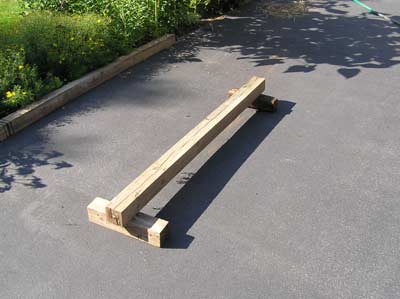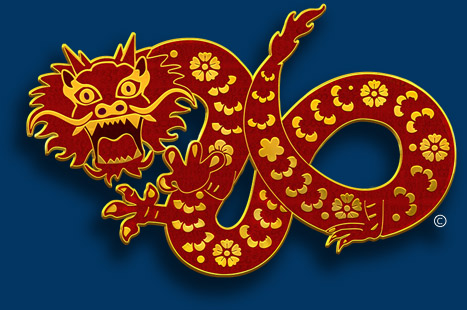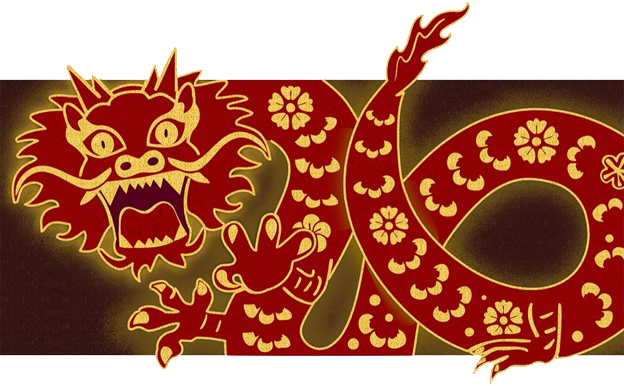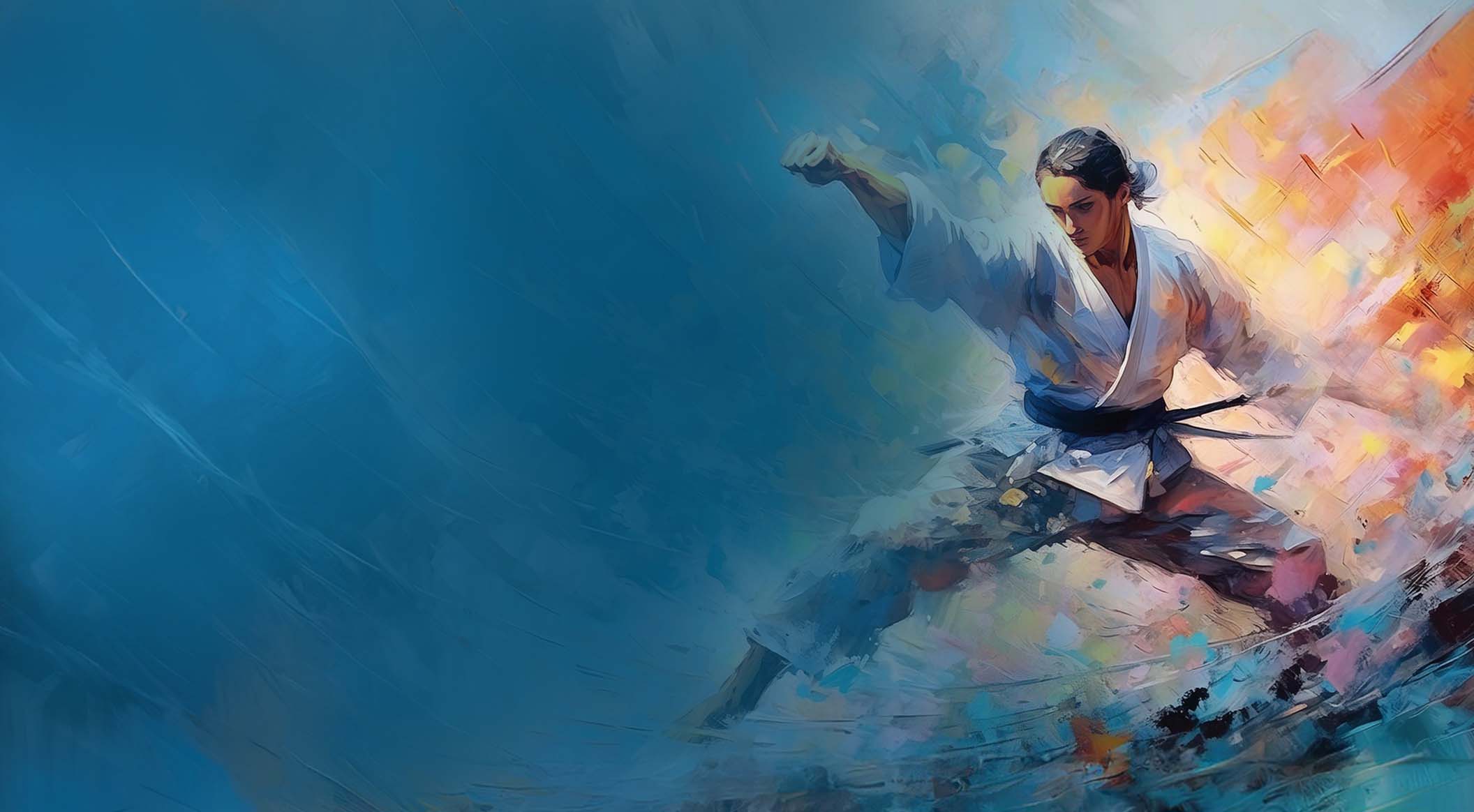Balance Beam Training
By George Donahue

An improvised balance beam.
One of the best devices for helping a student progress from beginner to advanced and beyond is a balance beam. Because we don't want or need a fancy gymnast's beam, this is also one of the cheapest pieces of equipment available. You don't need fancy wood. Any old 4X4 lumber will do. If there is no scrap 4X4 around, you can glue, nail, or screw a couple of 2X4s together. You can use three of them for a more stable and wider surface, for starters. All you need to do is sand off any splinters. Rough spots are okay and will actually help you keep your grip better. You don't even need a permanent setup—when I want to do some balance work, I just grab one of the well-aged landscape timbers or discarded fence posts I keep in the garden to edge the mulch and plant beds.
Unlike a gymnastic balance beam, which has to be perfectly straight, for martial arts practice warped is good. (That goes for minds, too.) The more warp the better, as you have more opportunity to develop greater control. And unlike a gym beam, you can lay this one directly on the ground or floor.* If you don't have a flat enough surface to lay it on, then you can lay a couple of cross pieces at the ends for a measure of stability. If the warp causes it to rock too much, you can chock it up with a rag towel. That's all it takes to have a balance beam at your disposal.
Now you can use it. Here are some sample exercises, numbered in order of difficulty. You can mix these up once you've tried them. You can improvise many more, to suit your needs.
1. The first exercise to try is just walking along the beam, from one end to the other, with your eyes closed.** When you get to the end, without opening your eyes, walk backward to the start. Once you can do this smoothly, then practice turning at the ends, still walking with eyes closed.
2. To exercise 1, add a front snap or thrust kick with every step; eyes still closed.
3. To exercise 2, add a side kick and a rear kick with every step. That's three kicks per step; eyes still closed.
4. Do the same routine with punches, backfists, and other hand techniques.
5. Do all of the above in all of the various stances within your system. Your stances will have to be narrowed a bit, and that will help you develop speed as well as balance.
6. Increase the speed of all of the above.
7. Practice kata, first in slow motion, then at half speed, then full tilt. You can open your eyes for this, but keeping them closed some of the time is good, too. If your system doesn't have a straight lateral kata such as Naihanchi or Tekki, then you'll have to adapt one.
When these exercises have gotten too easy, raise the balance beam by placing the ends on the seats of sturdy chairs. Even though nothing changes at all in the way you have to move and control your body, the added height will make everything more difficult. You might want to start off with the eyes open, but as soon as you're comfortable it's eyes shut again. After a bit, you can increase the height again by resting the beam ends on the tops of very sturdy chair backs. You'll need to have your training partners sit of the chairs to keep everything from toppling.
An interesting variation, once all of this has become too easy, is to set the beam up at an incline. The angle doesn't have to be much. One end can be on the ground while the other is on a step, a board, a block, or a stack of boards. Another variation is to shut only one eye. This makes a surprising difference in your balance.
When several people are training at this together, you can follow up with some light sparring, starting at half speed and going to full speed once you're used to it. Loser is the one who gets knocked off the beam first. This is a lot of fun, and kids particularly enjoy it.
* Also unlike a Jim Beam, which may lay you on the ground or floor.
** If you suffer from vertigo, you might need to leave your eyes open. That's okay; the exercises are challenging enough anyway.
Copyright © 2010 George Donahue & FightingArts.com

George Donahue
George has been on the board of FightingArts.com since its inception and is also a Contributing Editor.
George is a retired book editor, with a career spanning four decades, among his positions have been editorial stints at Random House; Tuttle Publishing, where he was the executive editor, martial arts editor, and Asian culture editor; and Lyons Press, where he was the senior acquisitions editor and where he established a martial arts publishing program. At Tuttle, he was the in-house editor for the Bruce Lee Library. Throughout his career he also edited, acquired, or reissued a wide array of military history, martial arts, and Asia-centric titles.
He was born in Japan in 1951 and originally named Fujita Tojo, with the Buddhist name KanZan. He was renamed George Donahue when he was several months old. After living part of his early childhood in the U.S. and France, he returned to Japan when he was seven years old and immediately was put (involuntarily) into intense training in traditional Japanese martial arts. His childhood training in Japan was focused on judo and jujutsu, primarily with Ando Shunnosuke, who blended keisatsujutsu (often referred to as police judo) and Olympic style judo in his teaching. He also studied kyujutsu (archery), sojutsu (spear), and kenjutsu (swordsmanship), with several teachers under the direction of his uncle, Tomita Yutaka. Following his return to the U.S. when he was twelve years old, he continued to practice judo and jujutsu, as well as marksmanship with Western style compound bow and firearms, and began the study of Matsubayashi Ryu karate in his late teens. Subsequently, he has studied aikido and cross trained in Ying Jow Pai kung fu. He began studying tai chi chuan in 1973 and now teaches qi gong and tai chi for health and fitness, as well as Okinawa Taijiken, which blends the principals of Okinawan karate with tai chi.
After studying Okinawa Karatedo Matsubayashi Ryu for ten years, he changed his focus to the teaching of Kishaba Chokei. He has been a student of Shinzato Katsuhiko, the director of Okinawa Karatedo Shorin Ryu Kishaba Juku, which comprises karate and kobujutsu (including Yamane Ryu Bojutsu) since 1983. He was also a student of Nagamine Shoshin, Nagamine Takayoshi, Kishaba Chokei, and Nakamura Seigi until their deaths. A key teacher in the U.S. was Arthur Ng, with whom he trained and taught for several years in New York City. He currently teaches Kishaba Juku privately, along with special training in karate, weapons, and self-defense. He has taught seminars throughout the U.S. and in Israel.
He has been teaching martial arts almost continually for sixty years. His first class, at twelve years old, was in judo for a group of military dependents and airmen at Sioux City Air Base, Iowa, at a time when the Air Force Strategic Air Command was beginning to stress training in martial arts, particularly jujutsu.
He was introduced to Kundalini Yoga practice in Japan but didn't begin serious practice of Kundalini and Hatha Yoga until he was in college. He practices yoga at least an hour a day and now teaches various approaches to yoga. He is also a cancer exercise specialist and a Livestrong at the YMCA instructor, helping cancer survivors regain and maintain their vitality.
Search for more articles by this author:






